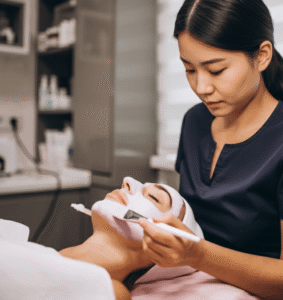Korea’s cardiac surgery field is undergoing a transformation, with several new procedures and technologies gaining approval for use in hospitals. These innovations are making heart surgery safer, less invasive, and more accessible for patients across the country. From robotic-assisted techniques to next-generation valve implants, these advancements mark a major step forward in cardiac care.
3D Endoscopic Minimally Invasive Heart Surgery
One of the most exciting advancements is the rise of 3D endoscopic minimally invasive cardiac surgery. Surgeons at Asan Medical Center have performed more than 500 of these operations, achieving remarkable results.
Instead of the traditional large chest incision, this technique uses a small 3–4 cm cut between the ribs, combined with a 3D high-definition camera system. It allows surgeons to repair valves, remove tumors, and treat arrhythmias without opening the chest.
Benefits include:
- 99% success rate in mitral valve repair procedures.
- Shorter anesthesia and operating times (30–40 minutes less on average).
- Reduced blood loss and pain.
- Faster recovery and shorter hospital stays.
This approach is now being expanded to more hospitals, offering a gentler alternative to conventional open-heart surgery.
Robotic-Assisted Heart Procedures
Korea has also approved the AVIAR 2.0 robotic system for percutaneous coronary intervention (PCI), a minimally invasive procedure for inserting stents in blocked coronary arteries.
Using robotic controls, cardiologists can guide wires and stents with high precision while sitting safely away from X-ray radiation. Hospitals such as Asan Medical Center and Eunpyeong St. Mary’s Hospital have already participated in early trials.
The robotic system enhances accuracy, reduces operator fatigue, and may eventually enable remote cardiac interventions.
Expanded Use of Transcatheter Aortic Valve Implantation (TAVI)
The TAVI procedure, which replaces a diseased aortic valve using a catheter instead of open surgery, has now been approved in Korea for patients with moderate and low surgical risk.
Originally reserved for high-risk patients, the expanded approval means that many more people can benefit from this life-saving procedure. Studies involving over 2,000 Korean patients show that TAVI not only reduces hospital costs but also results in faster recovery and fewer complications compared to traditional valve replacement surgery.
As technology and surgical training advance, TAVI is expected to become one of the most common cardiac procedures in Korea.
Artificial Heart and Ventricular Assist Devices (LVADs)
Korea’s leading hospitals are also seeing progress in mechanical heart support systems. Samsung Medical Center recently performed its 200th Left Ventricular Assist Device (LVAD) implantation—a record milestone for the country.
LVADs are mechanical pumps that help patients with end-stage heart failure, either as a bridge to heart transplant or as permanent support. Korean insurance coverage has expanded for these devices, making them more accessible to patients who previously had limited options.
The hospital has also completed more than 100 HeartMate artificial heart implantations, showing growing expertise in advanced circulatory support.
Why These Developments Matter
These newly approved and expanding procedures represent a major leap for Korean cardiac medicine:
➤ Less Invasive Treatments: Small incisions, robotic assistance, and catheter-based methods reduce trauma and speed up healing.
➤ Enhanced Precision: Advanced visualization and robotics allow surgeons to operate with millimeter accuracy.
➤ Broader Access to Care: More patients, including those who cannot tolerate open surgery, now have effective treatment options.
➤ Lower Costs and Faster Recovery: Shorter hospital stays reduce expenses for both hospitals and patients.
➤ Global Leadership: Korea is positioning itself as a hub for cardiac innovation, combining medical excellence with advanced engineering.
The Future of Heart Surgery in Korea
The coming years will likely see even greater integration of AI, robotics, and 3D printing into cardiac care. Korean researchers are already developing smart implants that can monitor heart performance in real time, and training programs are expanding to help more surgeons adopt minimally invasive and robotic techniques.
With the continued collaboration between hospitals, engineers, and regulators, Korea is poised to set new standards in cardiovascular surgery—offering patients safer, faster, and more effective treatments than ever before.













